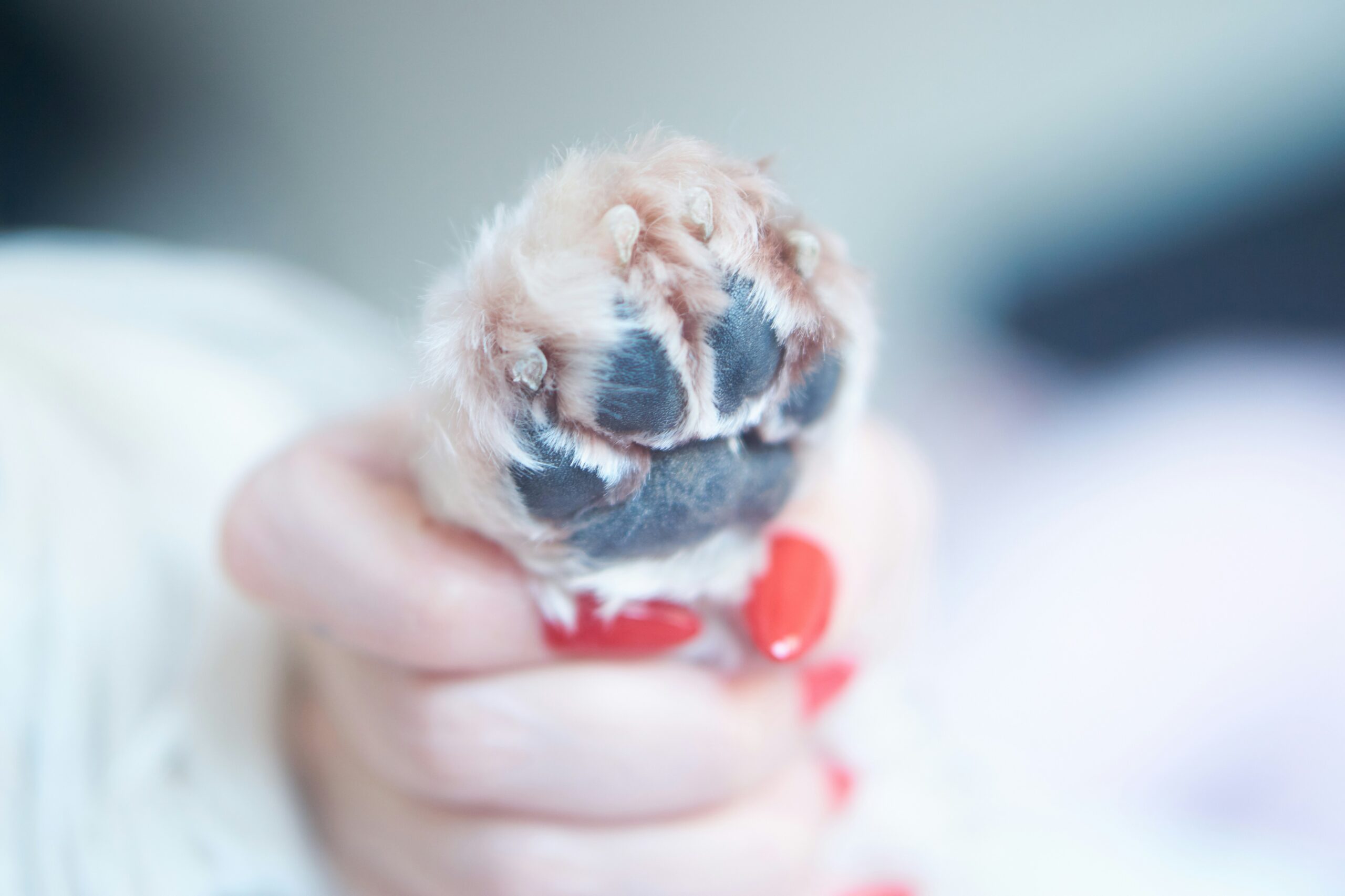Mastering the Art of Dog Nail Trimming: A Step-by-Step Guide for Happy and Healthy Paws
A step-by-step guide to safely trim your dogs nails, emphasizing the importance of regular nail maintenance to prevent pain and irreversible damage to your dogs health.
Importance of Regular Nail Trimming for Dogs
Regular nail trimming is crucial for maintaining a dog’s overall health and happiness. Long toenails can lead to various issues such as pain, infections, and getting caught in different surfaces. For instance, overgrown nails can cause discomfort for the dog when walking, as they may exert pressure on the toe joints, leading to pain and potential joint issues or arthritis. Moreover, untrimmed nails can also increase the risk of infections, as dirt and bacteria can accumulate around the overgrown nails, creating a breeding ground for harmful microorganisms.
Additionally, the importance of regular nail trimming is underscored by the potential impact on a dog’s physical activity and overall well-being. For example, overgrown nails can change the way a dog walks, leading to splayed feet, reduced traction, deformed feet, and injury to tendons, all of which can severely hamper the dog’s mobility and comfort. Therefore, by recognizing the significance of maintaining a dog’s nails at an appropriate length, pet parents can contribute significantly to the prevention of these complications, ensuring their pet’s long-term health and happiness.
Signs of Overgrown Nails
One of the signs that your dog’s nails may be too long is the sound of clicking when they walk on hard surfaces. This occurs when the nails have grown past the quick and come into contact with the ground, indicating that it’s time for a trim. Additionally, if you notice that your dog’s nails have long slender curves or are visibly extended past the quick, it’s a clear sign that they are due for a nail trimming session.
The implications of overgrown nails go beyond mere aesthetics. Long nails can cause discomfort and pain for your dog, leading to a reduction in traction and splayed feet, which can affect their mobility and overall well-being. Moreover, neglecting nail maintenance can result in deformities in a dog’s feet and even pose a risk of injury to their tendons, emphasizing the importance of regular nail care. Understanding these signs and their potential impact on your dog’s health underscores the significance of staying vigilant and proactive in keeping your pet’s nails at an appropriate length.
Tools and Techniques for Trimming Dog’s Nails
When it comes to trimming a dog’s nails, it’s essential to have the right tools and techniques to ensure the process is safe and effective. There are different types of nail clippers and grinders available for trimming a dog’s nails, and choosing the right tool is crucial for the dog’s size and nail type. For example, a small dog may require a different type of nail clipper compared to a large dog with thicker nails. It’s important to research and select the most appropriate tool to make the nail trimming process as comfortable as possible for the dog.
Properly trimming a dog’s nails involves specific steps that pet owners need to follow to ensure a successful outcome. These steps include picking up the dog’s paw, gently extending the nail, and carefully clipping only the tip to avoid cutting the quick. It’s important for pet owners to understand the anatomy of their dog’s nails to avoid causing any pain or discomfort during the trimming process. Moreover, using distractions like peanut butter or silicone mats can help make the experience more positive and less stressful for the dog. By keeping the dog relaxed and engaged, the nail trimming process can be much smoother and more enjoyable for both the pet and the owner.
In addition to selecting the right tool and following the proper steps, gathering all necessary supplies before starting the nail trimming process is crucial. This includes having the chosen nail clipper or grinder, treats for rewarding the dog, and styptic powder in case of bleeding. Being prepared with all the essential supplies ensures that the nail trimming experience is stress-free for both the pet and the owner, and can help prevent any potential mishaps during the process.
Step-by-Step Guide to Safely Trim Your Dog’s Nails
When it comes to trimming your dog’s nails, a step-by-step approach can help make the process easier and less stressful for both you and your furry friend. Before starting the nail trimming process, it’s important to ensure that your dog is comfortable and relaxed. You can achieve this by choosing a quiet and familiar environment, as well as providing your dog with positive reinforcement, such as treats or praise, to create a sense of calm and security.
Identifying the quick in your dog’s nails is a crucial step to avoid causing pain or bleeding while trimming. The quick is a blood vessel that runs through the center of the nail, and cutting into it can be painful and lead to bleeding. To locate the quick, examine the nail carefully, looking for the pink tissue inside. In light-colored nails, the quick is more visible, while it may be harder to identify in dark-colored nails. In these cases, it’s best to trim small amounts at a time to avoid cutting into the quick.
Using a proper nail trimmer is essential for a successful nail trimming session. There are different types of nail clippers and grinders available for trimming a dog’s nails, so it’s important to choose the one that suits your dog’s nail size and your comfort level. When trimming the nails, it’s important to clip only the tip of the nail, avoiding the quick. Additionally, maintaining a firm yet gentle grip on your dog’s paw can help ensure precision and prevent accidental cuts [1]. By following these steps, you can help keep your dog’s nails at a healthy length and maintain their overall paw health.
Nail Grinding as a Finishing Touch
In addition to trimming, nail grinding can be a beneficial step in maintaining a dog’s nail health. While trimming helps to shorten the nails, nail grinding can serve as a finishing touch to ensure that any rough edges are smoothed out, reducing the risk of the nails getting caught in various surfaces or causing discomfort to the dog.
It’s important for pet owners to understand that mistakes can occur during the nail trimming process, such as accidentally cutting the quick and causing bleeding. In such instances, having styptic powder readily available is essential to quickly stop the bleeding and alleviate any discomfort for the dog. This highlights the importance of being well-prepared and having the necessary supplies on hand before starting the nail trimming process.
Furthermore, being proactive about a dog’s health and well-being can involve exploring options like dog insurance plans. These plans can offer financial support by covering a significant portion of vet bills related to a dog’s health needs, including situations that may arise from nail trimming incidents. This provides an added layer of reassurance for pet owners, ensuring that their furry companions receive the necessary care without financial strain.
Importance of Regular Nail Trimming for Dogs
Regular nail trimming is an essential aspect of your dog’s overall health and well-being. Long toenails can have a significant impact on your dog’s comfort and happiness, potentially leading to discomfort and pain. Signs that your dog’s nails are too long include clicking on hard floors, long slender curves, and nails extended past the quick. If left untrimmed, long nails can cause pain, discomfort, and may even get caught in various surfaces, leading to potential injuries for your furry friend.
Furthermore, untrimmed nails can potentially contribute to joint issues or arthritis in the long run, affecting your dog’s mobility and overall quality of life. Long nails can also cause splayed feet, reduced traction, deformed feet, and injury to tendons, all of which can significantly impact your dog’s comfort and well-being. Therefore, it is crucial to stay proactive in maintaining your dog’s nail length to prevent these potential health issues and ensure their overall comfort and happiness.
Additionally, regular nail maintenance is not just about physical health but also psychological well-being. Overgrown nails can be uncomfortable for your dog, potentially leading to anxiety or stress. By prioritizing regular nail trimming, you can contribute to your dog’s mental and emotional well-being, creating a positive and comfortable environment for your pet. Remember, a happy dog is a healthy dog!





 Book Appointment
Book Appointment